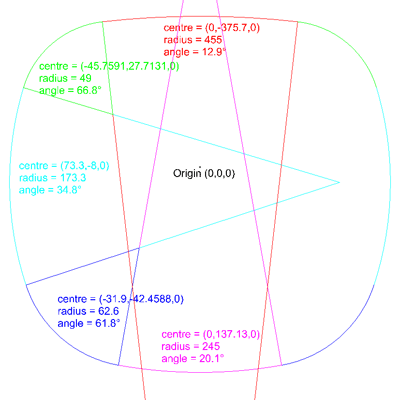| |
Lansdowne Road Stadium, Dublin |
- Due to open in 2009
- 50,000 Seats
- €365million
|
Description |
| Lansdowne Road Stadium is an example of Parametric Geometry Generation and I also discuss the design considerations required to ensure Pitch Growth. |
| The shape of the Lansdowne Road stadium was actually defined using mathematical equations and rules on the relationships between structural members using a process of Parametric Geometry Generation. This allows the computer to generate the entire geometry of the stadium given a few initial "parameters" to be used in its equations. A change can then be made in the design of the stadium by simply changing the input value of one of these parameters and the entire shape can be re-calculated at the push of a button, rather than the traditional method of manually re-drawing the new design in CAD. |
 |
| Quality Pitch Growth requires sufficient Light and Ventilation. Light is ensured through studies of daily and annual light levels through modelling the Sun Position and Average Climate through a Shadow Study. Ventilation is modelled in the computer using Computational Fluid Dynamics (CFD) techniques and validated through scale wind-tunnel testing. |
| |
References |
- More information on the Lansdowne Road Stadium and photos of its construction can be found on www.lrsdc.ie
- For more on Computational Fluid Dynamics see Wikipedia
- A video of the old stadium being demolished is on YouTube
- A PDF of the above definition of the five curves used to describe where the building touches the ground is available here by popular request. The derivation of the actual equations of the arcs is left as an exercise for the reader.
- Lots of photos of the stadium under construction are available on flickr here.
|


